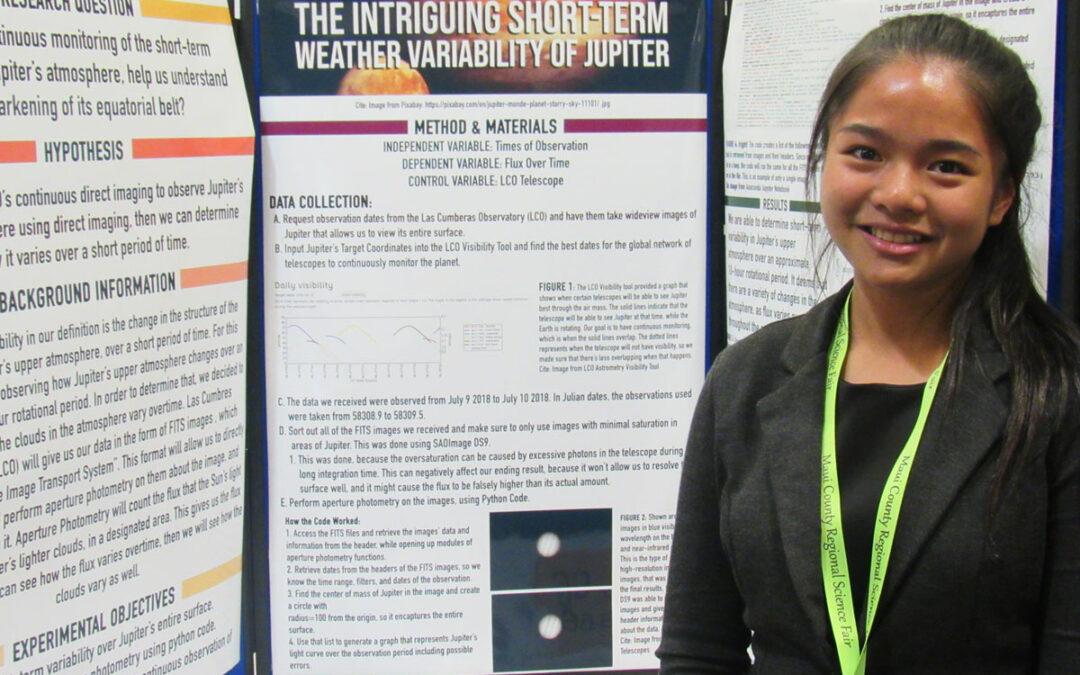
Mar 27, 2019 | Education, Stemworks
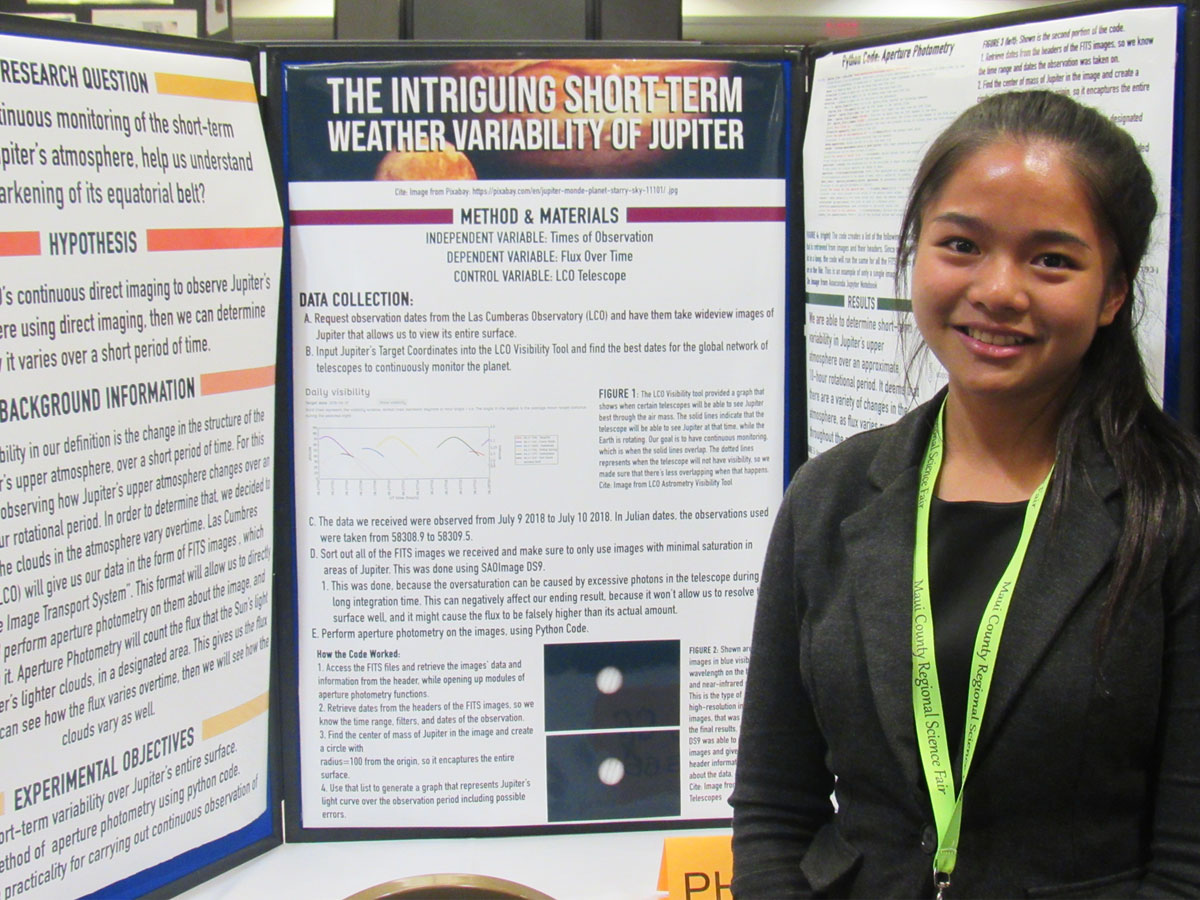
Maui High School 9th grader Faith Christy Soliven won First Place Senior Division Physics and Astronomy at the 60th Maui County Regional Science & Engineering Fair. Her project was “The Intriguing Short-Term Weather Variability of Jupiter”. One of the 18 merit award winners, Soliven will represent the Maui District in the Hawaii State Science & Engineering Fair on Oahu, April 8-10.
“My project investigates the short-term changes of Jupiter’s upper atmospheric structure over a 10-hour rotational period,” Soliven explained. “Data from the Las Cumbres telescopes allowed my mentor, Jessica Schonhut-Stasik, graduate student at the UH Institute for Astronomy in Hilo, and I to monitor the change in flux over the surface during a rotation period to see how Jupiter’s weather varies in the upper atmosphere as it rotates. Jupiter was good to observe, because of its large size, closeness, and brightness. Studying Jupiter’s short-term variability is a good pilot test for observing other planet’s weather in the future. We expect the observations can help us learn more about similar planets and how they affect the near-Earth space environment.”
Schonhut-Stasik said, “Faith is one of the best science students I’ve had. I’m so proud of her advancing to State on her first attempt. Also, I’m pleased that she has learned coding for Python. Coding is valuable for every graduate now and I’m glad I could provide her with that opportunity. I think we can expect awesome things from Faith, at State and in the coming years.”
Soliven was introduced to the concepts of STEM (science, technology, engineering, mathematics) at Lokelani Intermediate School, a Maui Economic Development Board (MEDB) STEMworks™ school. “Sponsored by MEDB, I went to my first Hawaii STEM Conference and on field trips like ‘Introduce a Girl to Astronomy Day’ at the Haleakala Observatory,” said Soliven. “Being involved in these opportunities and extracurriculars inspired me to consider the vast number of opportunities provided in the STEM industry. I learned so much about the skills needed to perform problem-solving tasks and how applying that to the real world can make a huge difference in my life and impact many others.”
My motivation for this project was the idea of wanting to apply astronomy to understand our own planet and the solar system.
Faith Christy Soliven, Maui High School 9th grade
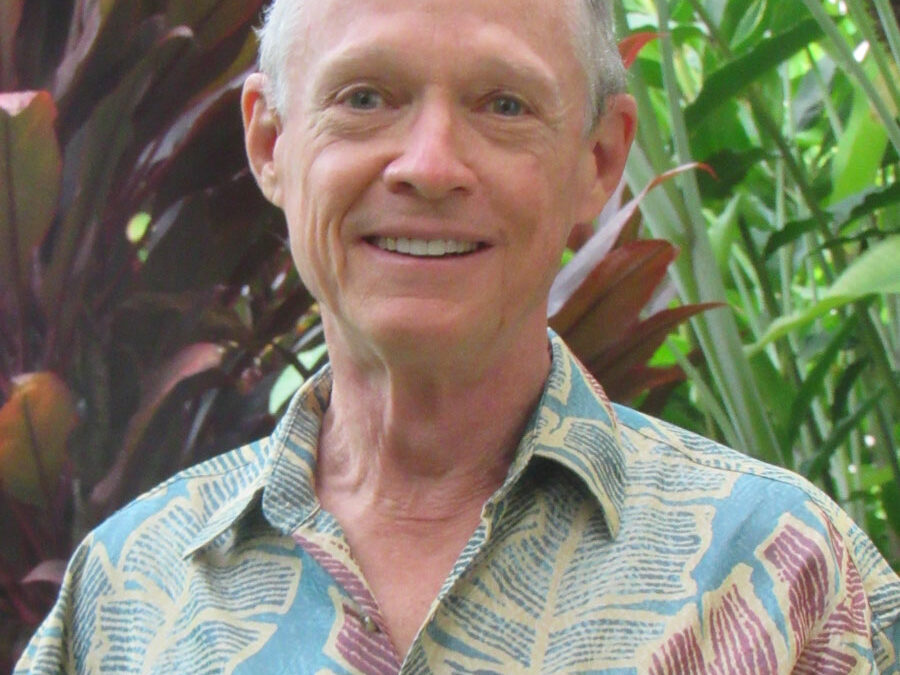
Mar 13, 2019 | Education, Environment, Innovation
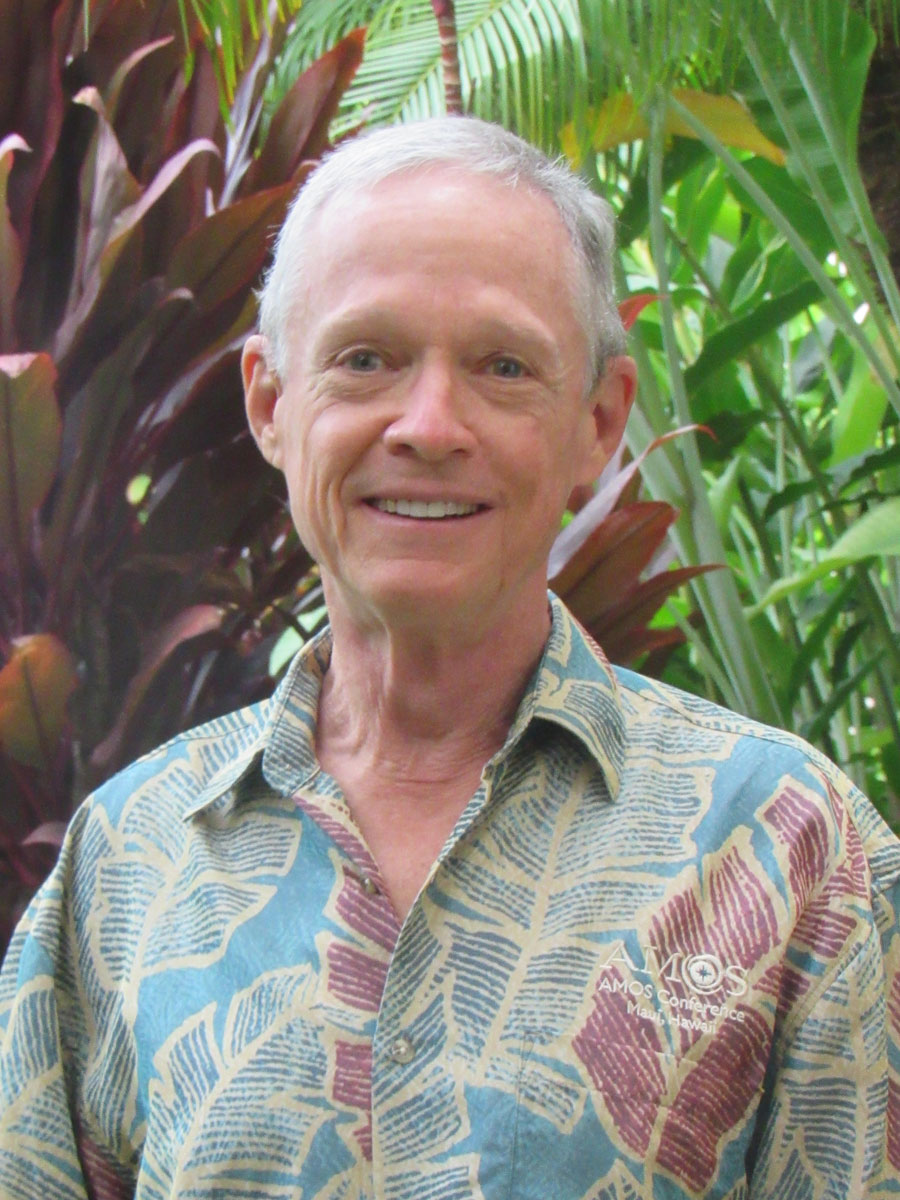
Maui resident Dr. T.S. Kelso has been tracking satellites for over 35 years. Kelso serves as a Senior Research Astrodynamicist and Space Data Center Operations Manager for the Center for Space Standards & Innovation at Analytical Graphics, Inc. (AGI). Throughout his career he has supported the space surveillance community by providing educational materials and data to satellite users around the world.
“My main job is running the Space Data Center, where we screen 748 satellites for 30 satellite operators from many nations,” Kelso explained. “We are screening these satellites to identify close approaches with other satellites and all the debris up there. Right now, there are 2,000 operational satellites in Earth orbit, and we track over 17,000 objects larger than 10cm. The real challenge is filtering through the hundreds of close approaches we see each day, so that the operators can focus on how to move in time to avoid a collision.”
AGI is a big supporter of education and has been a key sponsor for the annual Advanced Maui Optical and Space Surveillance Technologies Conference (AMOS) Conference, a program of Maui Economic Development Board (MEDB). “Not only does AGI sponsor AMOS, but we have hosted a star party each year to introduce attendees to the wonders of the Maui sky,” said Kelso. “In addition, we have supported MEDB’s STEM (science, technology, engineering, mathematics) programs with free educational copies of our software.”
Kelso also operates the CelesTrak website, the world’s first private source for orbital element sets and related software and educational materials. The site is visited by more than 350,000 users each day and supports everyone from professionals operating satellites in orbit, to faculty, students, and other researchers investigating the space environment− to individuals who just want to go out to see the International Space Station pass over.
Kelso concluded, “All the safety and security considerations of air and sea travel now pertain to space travel at a vastly enhanced level because the costs and risks are even higher. The event of spacecraft colliding is serious to our global economy and security.”
We can move satellites so they don’t get hit, and we do that every day. AGI designs software to predict close approaches of satellites. That’s my job; that’s what I do!
Dr. T.S. Kelso, Senior Research Astrodynamicist and Space Data Center Operations Manager, Center for Space Standards & Innovation, AGI
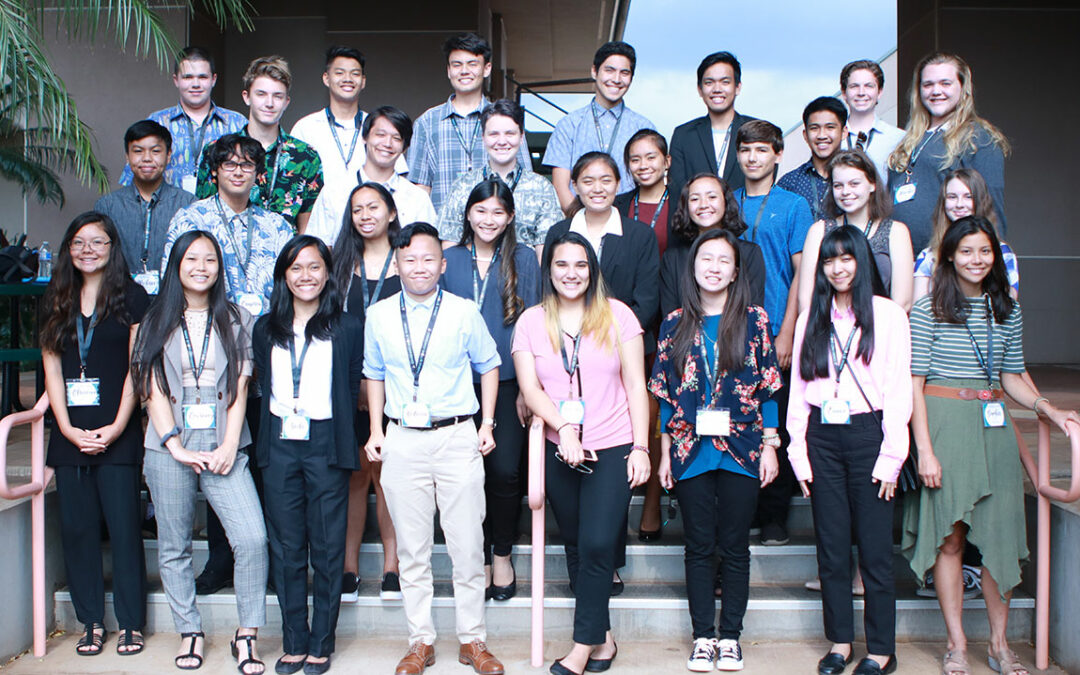
Feb 13, 2019 | Education, Stemworks
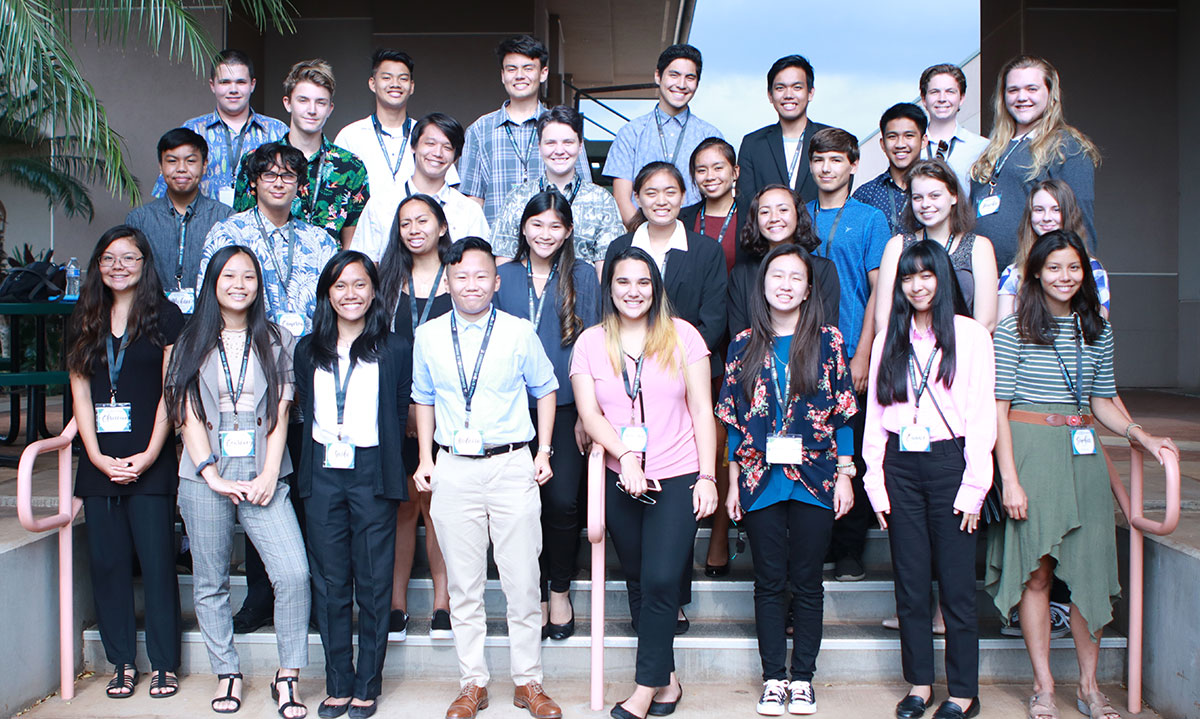
The STEMworks™ Summer Internship, the flagship program of the Maui Economic Development Board’s (MEDB) Women in Technology Project (WIT), provides work-based learning opportunities that help build critical and creative thinking. The internship program prepares students for a STEM (science, technology, engineering, mathematics) career by providing real world opportunities to develop meaningful projects. STEMworks™ students are matched with a host company based on the company’s project needs, and the skills of the student.
Summer internships in 2019 will run from June 10 through July 18 and applicants must be STEMworks™ participating high school students. Students can apply from March 18, 2019 and until May 9. Students will be notified of their application status by May 17. For more information, go to http://stemworkshawaii.org/internships Last year, thirty-one high school students representing the most promising STEM talent across the state presented their innovative projects at the STEMworks™ Summer Internship Showcase, highlighting the experiences they had with their host company mentors.
Hadassa Ballarta, Maui High School, interning as a programmer at Air Force Research Laboratory (AFRL), said, “My project with AFRL consisted of scripting a planetarium presentation that incorporated the culture of Polynesian way-finding. In doing so, I was able to learn a new programming language and gain a better understanding of the stars above us and, overall, our universe.This internship has made me aware of new job possibilities and fields that I never knew existed!”
Tehya Purdy-Yamane, King Kekaulike High School, interning as a GIS specialist at the MEDB-Maui County Healthcare Partnership, said, “For my STEMworks™ Internship I worked with data from different Maui County medical facilities and compiled them into files that would later be uploaded and imported to a medical map as data points on ArcGIS. My mentor and I created a story map that is easy to operate and understand when someone is looking for a certain medical field, being anything from physical therapy to hospice.”
MEDB’s summer internships were enhanced with weekly professional speakers and training sessions as well as STEMworks™ “LIVE” webinars designed to inspire and build student’s professional skills.
Lalaine Pasion, WIT Project Manager
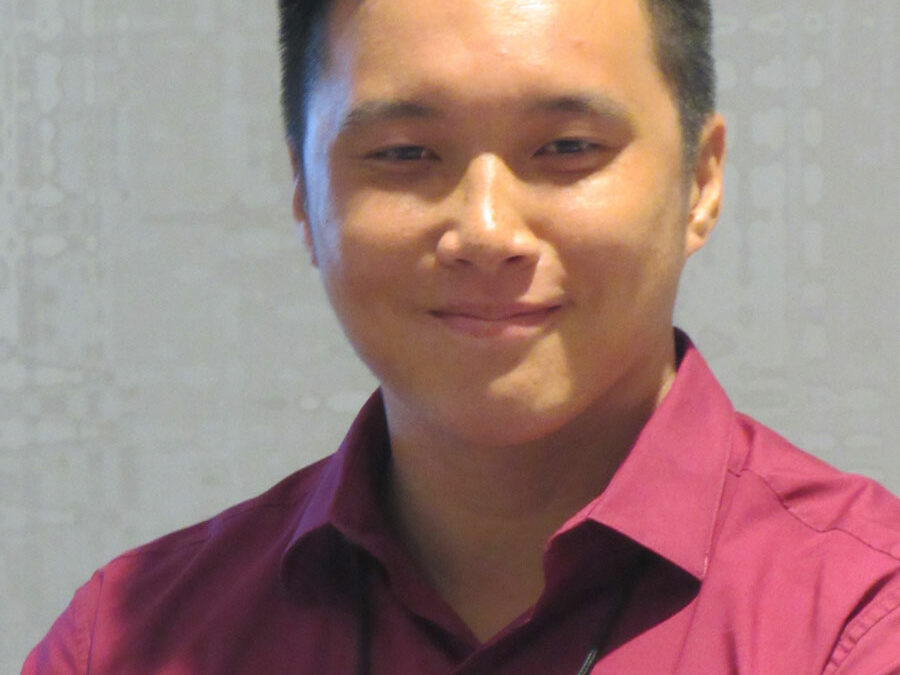
Jan 9, 2019 | Education, Stemworks
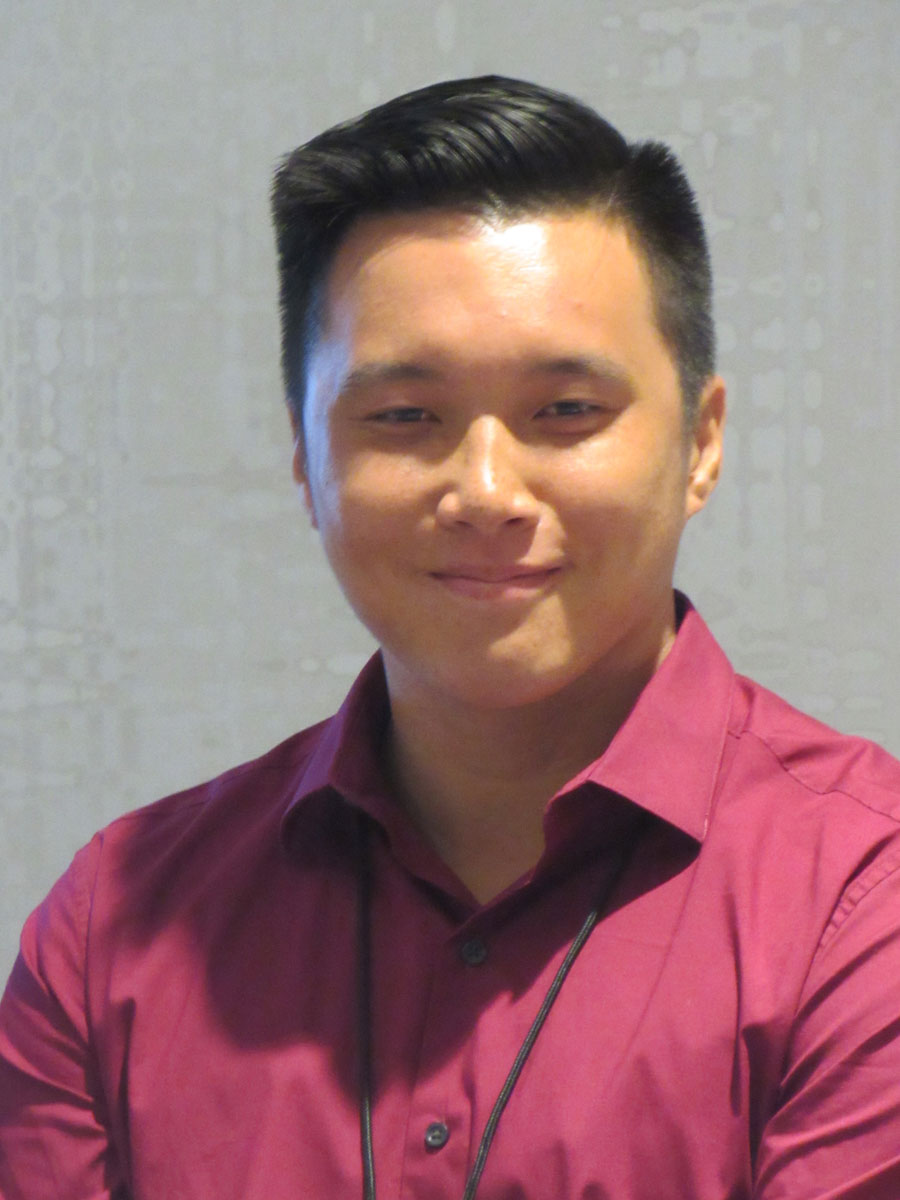
Growing up in Hawaii, Robert Kalei Miller, a geospatial information analyst at the Pacific Disaster Center (PDC) in Kihei, was always interested in learning about geography and technology. His goal was to obtain a college degree in geospatial technologies with the hope of working on Maui, where he grew up. At King Kekaulike High School, under the guidance of Mrs. Emily Haines-Swatek, Miller joined Project EAST−now called STEMworks™, a program of Maui Economic Development Board’s (MEDB) Women in Technology Project.
“STEM (science, technology, engineering, mathematics) gave me the opportunity to gain exposure in my interested career field,” said Miller. “For three consecutive summers, I was fortunate to work as a STEMworks™ Intern for the PDC, where I developed work skills and professional relationships. I learned more about geographic information systems and I discovered that I could turn my personal interest in geography into a real career.”
After graduating in 2013 from Portland State University in Oregon, Miller was offered a full-time position at PDC as a Geospatial Information Analyst. His job directly supports disaster efforts locally and internationally, and is a dream come true for him.
“Through MEDB’s STEM programs my career goals and dreams turned into reality,” Miller said. “MEDB’s educational programs provided me with an opportunity that many local youth continue to benefit from today. It is an honor to continue to work with MEDB and be one of the first recipients of the Jeanne Unemori Skog Leader & Entrepreneur (JUS) Fund. The Fund supports the next generation of visionaries through innovative programs, projects and other initiatives that develop future leaders and entrepreneurs to benefit the people of Maui County”
Miller’s JUS award allowed him to attend the two-day EMER-GEN Conference for young professionals, aged 35 and under, in the space industry. “This was a great opportunity to learn from renowned space specialists, network with industry peers, and learn professional skills,” he said. “The knowledge and experiences I gained from EMER-GEN will help me with my continued career growth.”
MEDB is committed to helping young professionals and students of all ages to achieve their dreams. They are a blessing to Maui County!
Robert Kalei Miller, Geospatial Information Analyst, Pacific Disaster Center
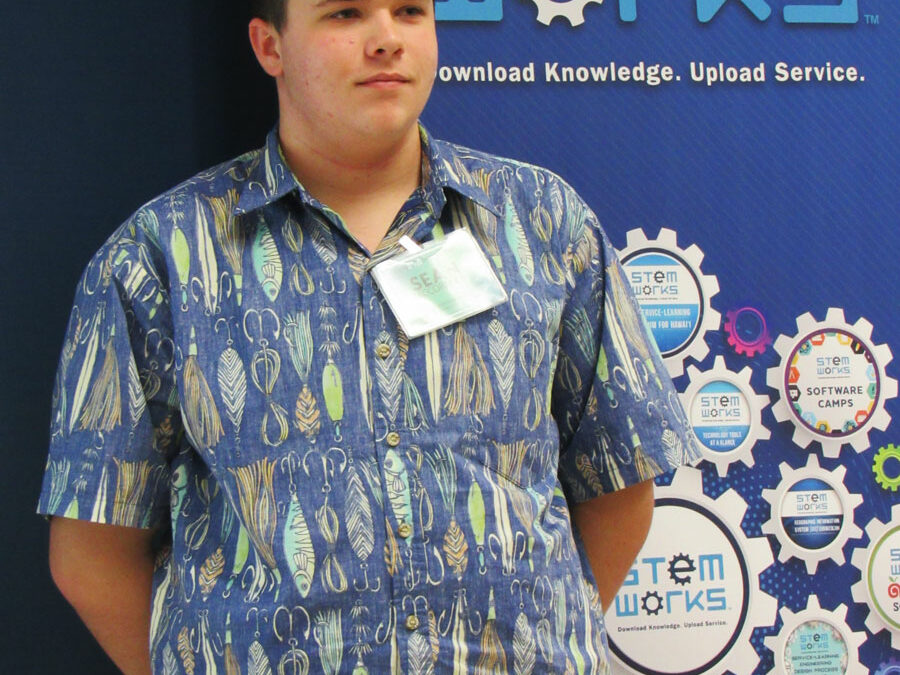
Oct 10, 2018 | Education, Stemworks
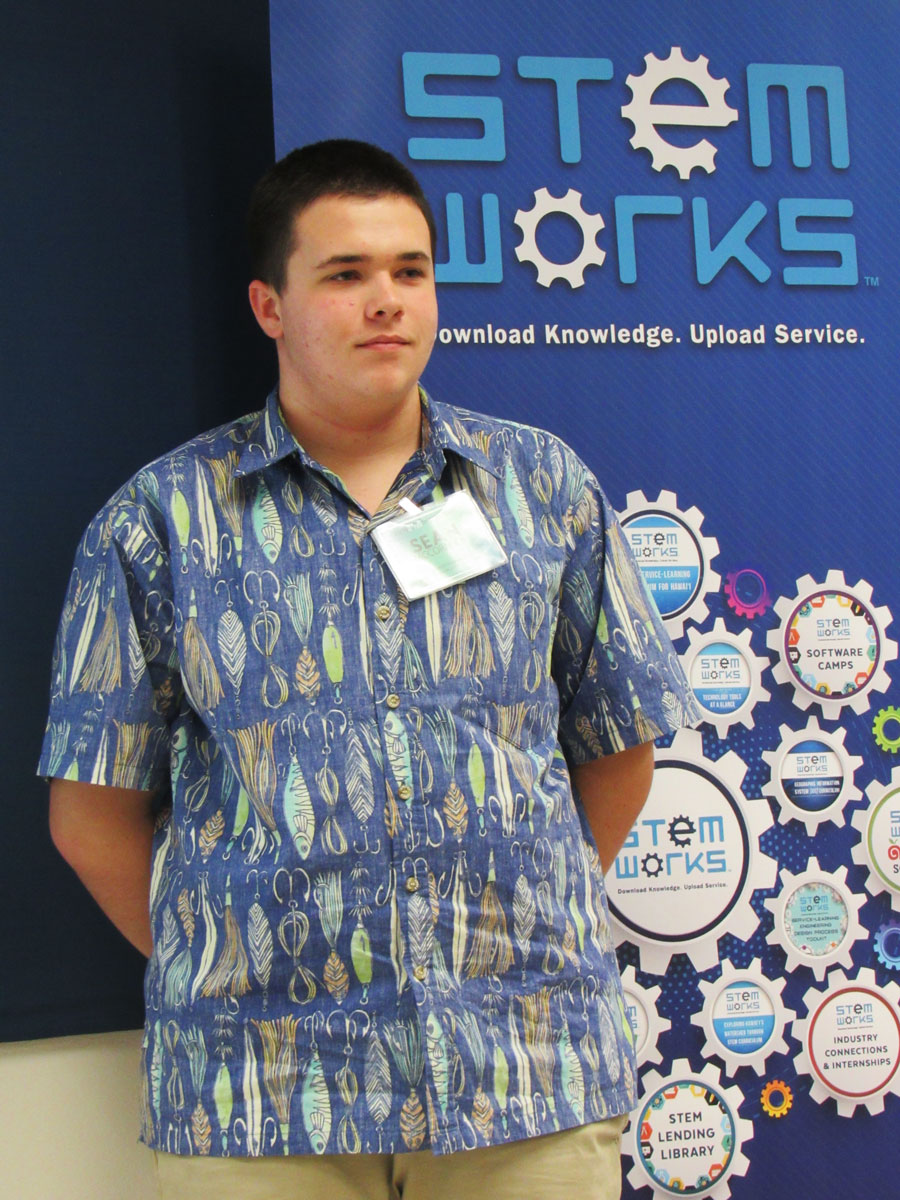
Sean McCormick, King Kekaulike High School, was among the 31 high school students participating in Maui Economic Development Board’s (MEDB) Women in Technology Project (WIT) STEMworks™ Summer Internship Program. For six weeks, the STEMworks™ interns aligned their abilities and interests with industry professionals throughout the islands. The experience provided invaluable work-based learning for the STEM (science, technology, engineering, mathematics) students to explore career pathways.
McCormick’s STEMworks™ Internship project included creating a computer program that can help astronomers find and predict the transit of an exoplanet, the passage of a planet between a star and the Earth. He worked with Dr. J. D. Armstrong, an astronomer and the Education Outreach Specialist from the University of Hawaii Institute for Astronomy (IfA).
McCormick explained, “An exoplanet is a planet orbiting around a star other than the Sun. Exoplanets are difficult to identify as they cannot be directly seen in a telescopic image due to their distance from Earth. Exoplanets are identified when they block a small amount of light from the star they are orbiting. Observations are collected, and the intensity of the star is graphed over time. If there is an exoplanet, the graph will have a U-shaped dip. The radius of the planet, relative to the parent star, can be determined at this point by using the ratio of the star’s intensity when the exoplanet is transiting and when it is not. This is indicative of how much of the light from the star is being blocked by the exoplanet. I discovered that entering the collected data into a supercomputer is the best approach to this problem.”
McCormick found his project fun and challenging—trying to learn the math and figure out how to automate it. He noted, “I am looking forward to continuing to work on research projects with both STEMworks™ and the IfA in the future.”
Dr. Armstrong concluded, “Every year MEDB sends me some amazing interns to work with. I appreciate the level of skills, hard work, and creativity they bring to the IfA.”
During my summer internship I had the chance to analyze the light from stars to discover exoplanets. Thank you STEMworks™ and IfA for the opportunity to experience a job in astronomy!
Sean McCormick, King Kekaulike High School
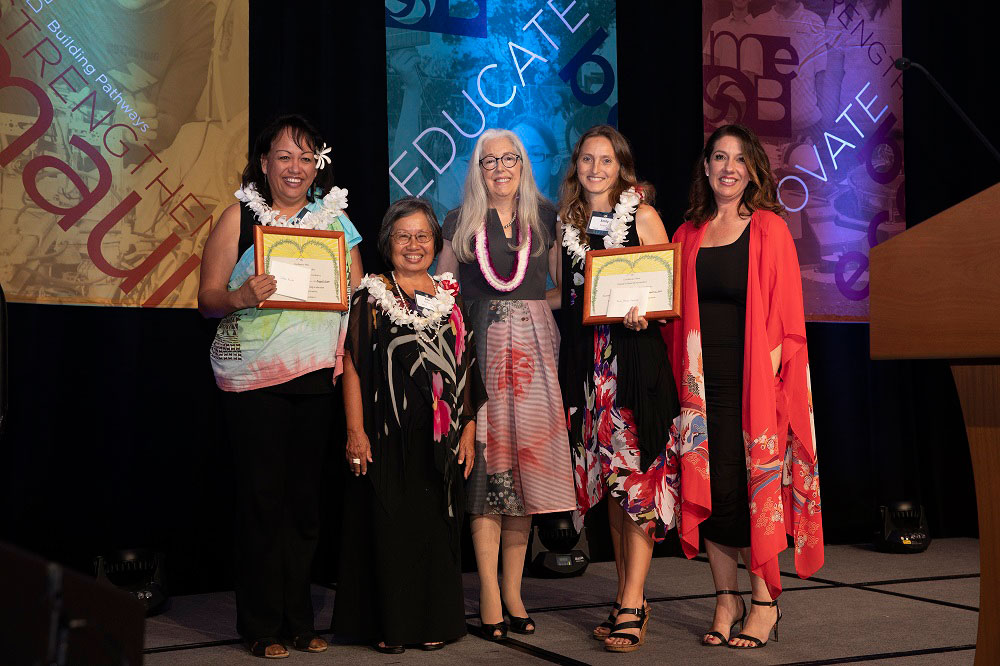
Sep 19, 2018 | Education, Stemworks

For the nearly 500 guests who attended this year’s annual Maui Economic Development Board’s (MEDB) Ke Alahele Education Fund Benefit Dinner, the love of science, technology, engineering and mathematics (STEM) was in the air. Held at the Grand Wailea Resort, the festive evening showcased Maui County’s STEM stars and raised funds to support MEDB’s STEM education programs throughout our county and across the state.
During the program, students also had an opportunity to share their love of STEM. Jeffrey Ho, 4th grader at Pukalani School enthusiastically said, “I’ve been a part of the STEMworks™ AFTERschool program for 2-years and have been exposed to robots, ozobots, coding, digital media, CAD, 3D printing, and more! These experiences have helped me gain leadership skills and confidence.”
Yasha Ronquillo, Maui High School alumna and STEMworks™ intern, observed, “If I were to describe the power of STEM for me personally it would be growth and opportunity. During my 6-week internship I networked with students and STEM industry professionals that I will continue to keep in contact with.” The students all thanked MEDB and STEMworks™ for the encouragement to embrace change and pursue opportunities for growth.
New to the event was the presentation of the Czechowicz Teaching Excellence Award, created by two former teachers, Lesley and Pawel Czechowicz, in honor of their mothers. The inaugural award recognized three exceptional STEMworks™ facilitators in Maui Nui: Cindel Jacintho of Lanai Elementary & High School’s after school program; Iolani Kuoha of ‘O Hina I Ka Malama, Molokai Middle Hawaiian Immersion School; and Emily Haines-Swatek of King Kekaulike High School.
The evening’s finale was the presentation of the Daniel K. Inouye Innovation Award, the highest student award MEDB presents. This year, the award went to 2018 King Kekaulike graduate Justin Hanks for integrating all the resources and skills he learned in the STEMworks™ program. For his senior project, Hanks put on elementary school STEM camps to encourage innovation and creativity in younger students.
MEDB Board President Ryan Churchill concluded, “We thank all those who have contributed and played a role in our youth’s love of STEM. It’s truly an investment that has the power to come full circle, helping to shape our leaders of tomorrow and ensuring a bright future for our islands.”
These funds will provide state-of-the-art technology tools for our students and training for our teachers — investments that will make a difference in the lives of our residents and our community.
Leslie Wilkins, MEDB President and CEO
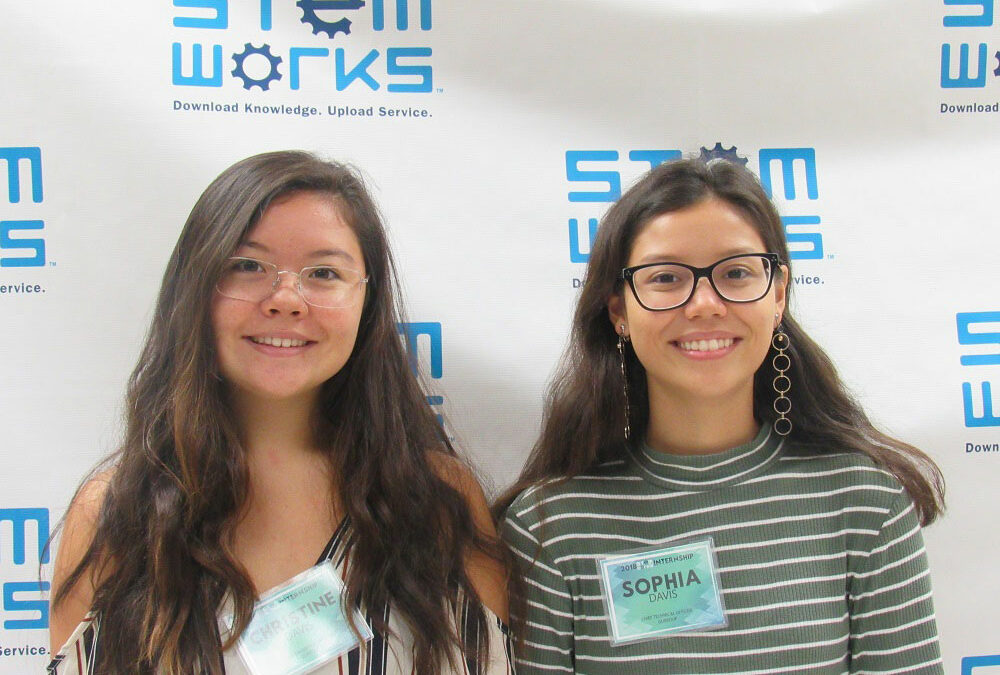
Sep 5, 2018 | Education, Stemworks
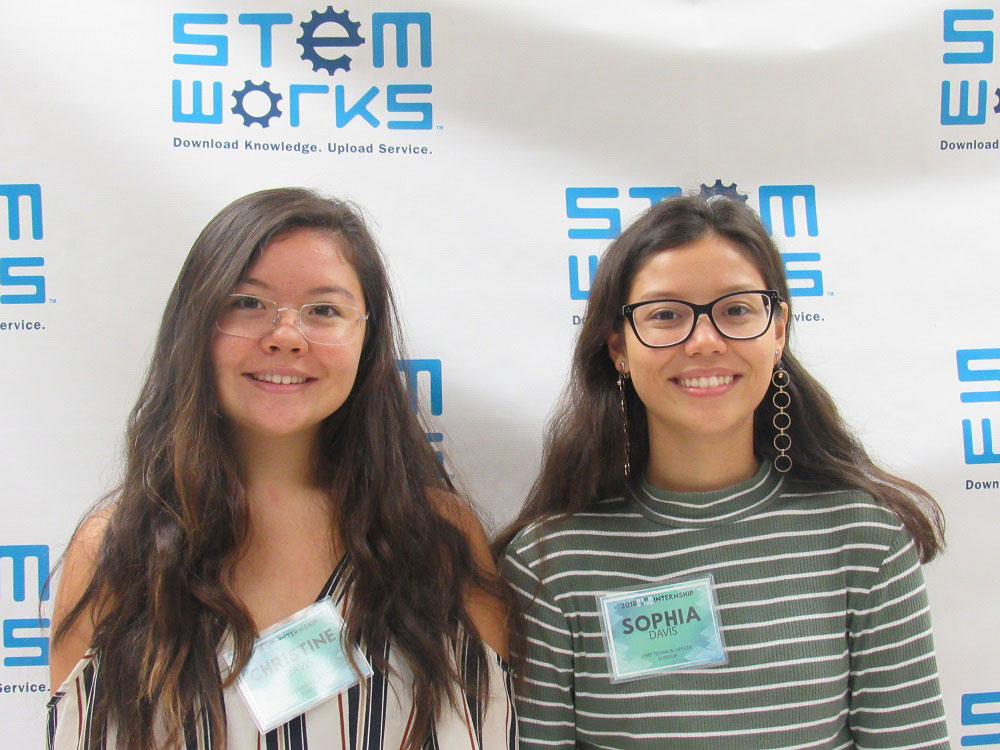
Sophia and Christine Davis, Kihei Charter School, were among 31 of the most promising STEM (science, technology, engineering, mathematics) high school and college students presenting their innovative projects at the 2018 STEMworks™ Summer Internship Showcase. Created by Maui Economic Development Board’s (MEDB) Women in Technology Project (WIT), the six-week STEMworks™ Summer Internship provides statewide, work-based learning opportunities for students, matching their interest and skills with the needs of the host company.
Mentor Ron Viloria from qubedup Company noted, “STEMworks™, cultivated by MEDB’s WIT, has proven itself to be the single most valuable resource for my company’s launch. The Davis sisters had the opportunity to step up and grow the qubedup work environment. During the last six weeks my company went from just being registered to having a web presence and items for sale. Sophia has built a prototype “smart lei” that has safety, medical, and entertainment applications. It’s our take on improving and promoting a portion of local Hawaiian culture.”
Viloria continued, “Christine heads the Social Media campaigns of the company and started a Hawaii-positivity movement for the community. Everything is rooted in stories and their stories are just unfolding.”
Sophia said, “My STEMworks™ Internship projects were several notably different yet connected projects. My first project was a smart lei, a unique Hawaiian-style wearable technology with various lights and sensors that react to the world around it. The second was creating digital designs that have an extra story or layer for our Redbubble portfolio and other print-on-demand merchandise services. The final project is designing and coding a special web app for qubedup that has a connection to some of my designs. Thanks MEDB for hands-on experience in a real workplace!”
Christine added, “At qubedup, I worked on creating innovative fashion technology that included marketing, social media managing, and logo designs for products. Being a STEMworks™ intern means being part of a network of passionate individuals in the STEM education movement. It helped me solidify potential career paths, dedicate myself to interesting and innovative work, and change the world through STEM.”
STEMworks™ students have a unique opportunity to explore technical and professional development and embrace new life skills to create change in their local communities.
Lalaine Pasion, WIT Project Assistant

Aug 15, 2018 | Education, Innovation, Stemworks

Molokai High School’s (MHS) Mākaʻikaʻi iā grant from Maui Economic Development Board’s (MEDB) Ke Alahele Education Fund provided support for the school’s O Hina I Ka Malama Hawaiian Immersion Program. “The main outcome of the grant produced a series of virtual field trips of environments on Molokai showcasing important natural and cultural resources,” said Gandharva Mahina Hou Ross, Molokai High School Hawaiian Language Immersion teacher and boys’ cross-country coach. “This curriculum model is place and culture- based and uses technology as a way of tying in the state performance standards and making education relevant. The grant gave the students the opportunity to create a website that documents the different environments on Molokai.”
Ross explained, “We took monthly field trips to various marine environments to conduct culture-based inquiry of important marine resources. Students traveled to the northwest, south and east coasts of Molokai to do shoreline monitoring. They collected samples of marine algae, marine invertebrates and marine vertebrates for further investigation in the classroom. Samples were identified with Latin, Hawaiian and common names, along with their habitat, diet, life cycle, traditional Hawaiian uses and management practices. After taking film footage on our field trip, the students used green-screen editing technique to describe what they saw.”
Funds were also used to create an internet domain for O Hina I Ka Malama’s bilingual website as a database to archive our program activities. The marine field guide will be archived on the school website that the students designed. Through the virtual field trips, the grant also enabled the students to create multimedia presentations on Molokai, at the annual MEDB Women in Technology (WIT) STEM (science, technology, engineering, mathematics) Conference, and at Hawaiian Language Immersion schools throughout Hawaii.
“I want to thank MEDB and WIT STEMworks™ for the Ke Alahele grant,” said Kauiwai Poepoe-Mollena, MHS 12th grader. “They provided us with the newest technology resources to complete our field trip tasks such as meter-square plots, ARC GIS mapping, cameras and GPS to mark points at the designated areas.”
On Saturday, August 25, 2018, MEDB will hold their annual Ke Alahele Education Fund Benefit Dinner & Auction at the Grand Wailea Resort. For more information call (808) 875-2300 or email cari@medb.org. Please join us!
Leslie Wilkins, MEDB President and CEO
Aug 8, 2018 | Education, Stemworks

Maui resident Steve McCaughey recently joined a growing number of private-citizen space enthusiasts from all walks of life who serve as NASA Solar System Ambassadors (SSA). The nation-wide SSA program brings the excitement of NASA’s space exploration to children, teachers, and adults in the community. As an Ambassador, McCaughey will deliver information about NASA’s vast endeavor of missions and scientific study, through school programs, planetarium talks, telescope-viewing parties, mall displays and much more.
McCaughey describes himself as a “lover of the night sky.” He first came to Hawaii in 1973 on a 40-foot schooner, with no GPS satellites to help navigate. “We conducted daytime sun sightings at noon and 2pm with a sextant, and computed our position with logarithmic tables,” he explained. “At night I had the 4am watch and I steered the boat by the stars. I fell in love with the constellations and notable objects in the sky that can be observed with binoculars, and I began studying double stars.”
Soon after, McCaughey joined the Hawaii Amateur Astronomers (HAA). He purchased a Celestron 9.25-inch Schmidt-Cassegrain telescope with an equatorial mount on a pier, and a 104mm refractor that he uses for educational outreach. He began attending the University of Hawaii Institute for Astronomy (UH IfA) AstroTalks in Pukalani, and a few years ago helped form the Maui Double Star Association, a group of students and adults who do observations of double stars. Some of the student participants ended up being co-authors on a paper in the Journal of Double Star Observations, and one is majoring in physics because of this experience.
With the inspiration of Dr. J. D. Armstrong, UH IfA Educational Outreach Specialist, McCaughey’s HAA group has conducted astronomy outreach on Maui for the past ten years. They travel to STEM (science, technology, engineering, mathematics) conferences, conventions, schools and other events with their telescopes. “McCaughey’s dedication to community engagement with space science is outstanding,” said Dr. Armstrong. “Regarding his recent NASA Ambassadorship appointment, we look forward to sharing more with him.” For educational outreach information, call (808) 281-2468.
I look forward to bringing the world of NASA and astronomy to those who are interested in ‘looking up’. The youth of today are the ones who will take us on and beyond!
Steve McCaughey, NASA Solar System Ambassador
















